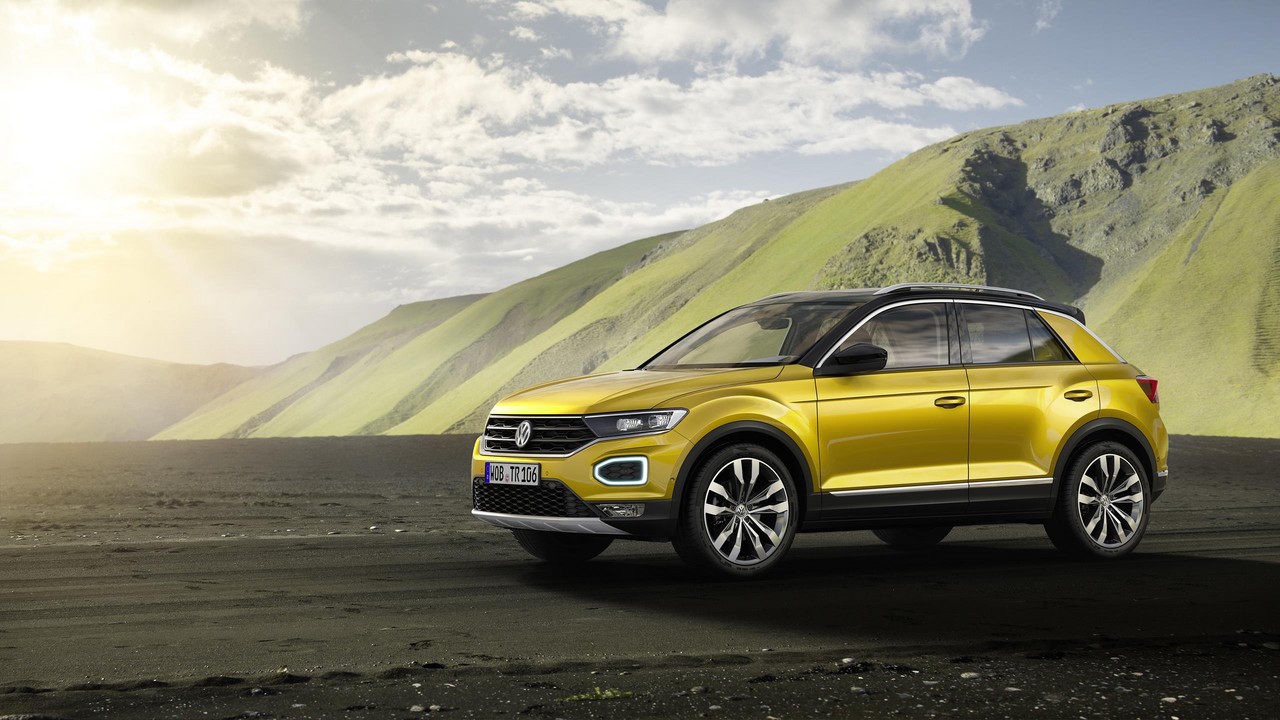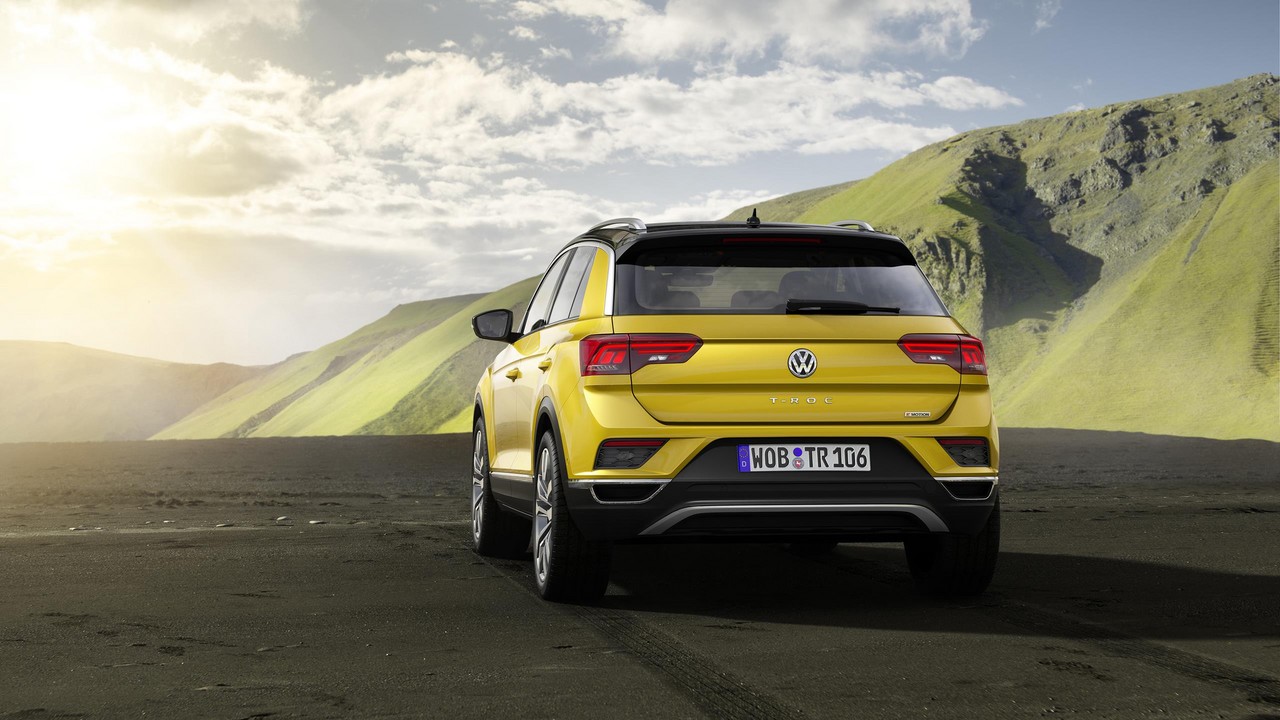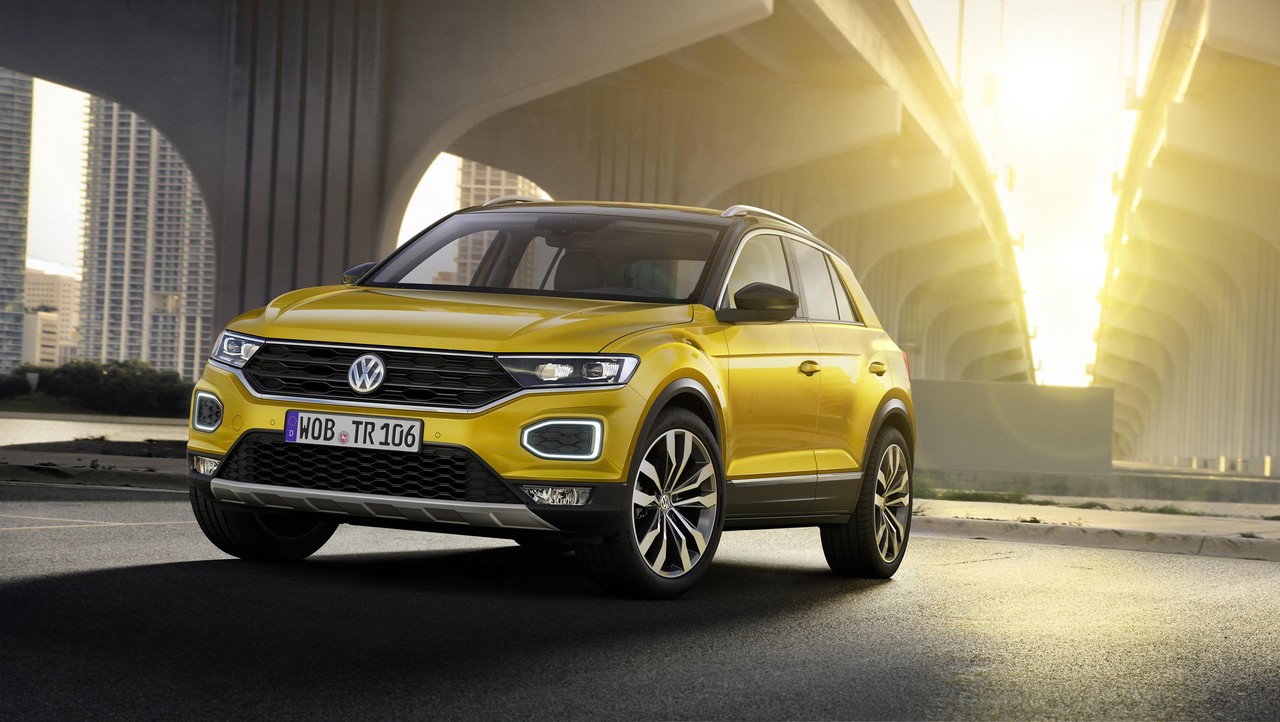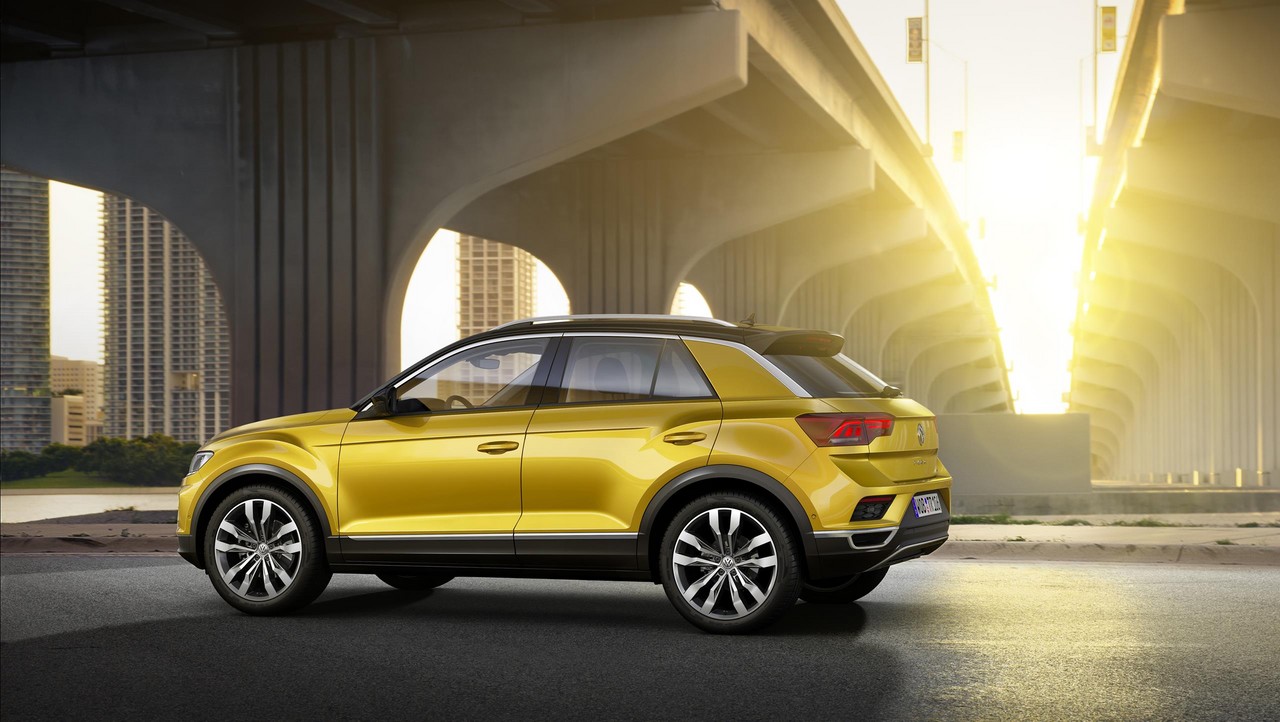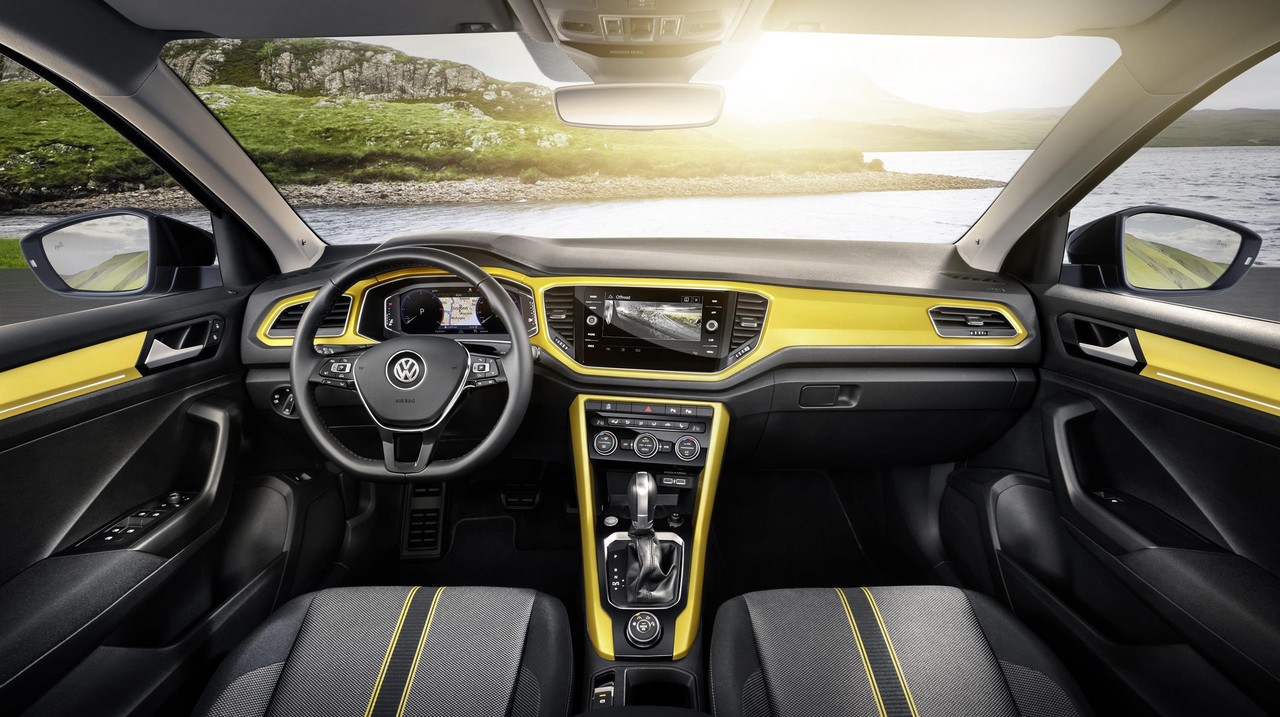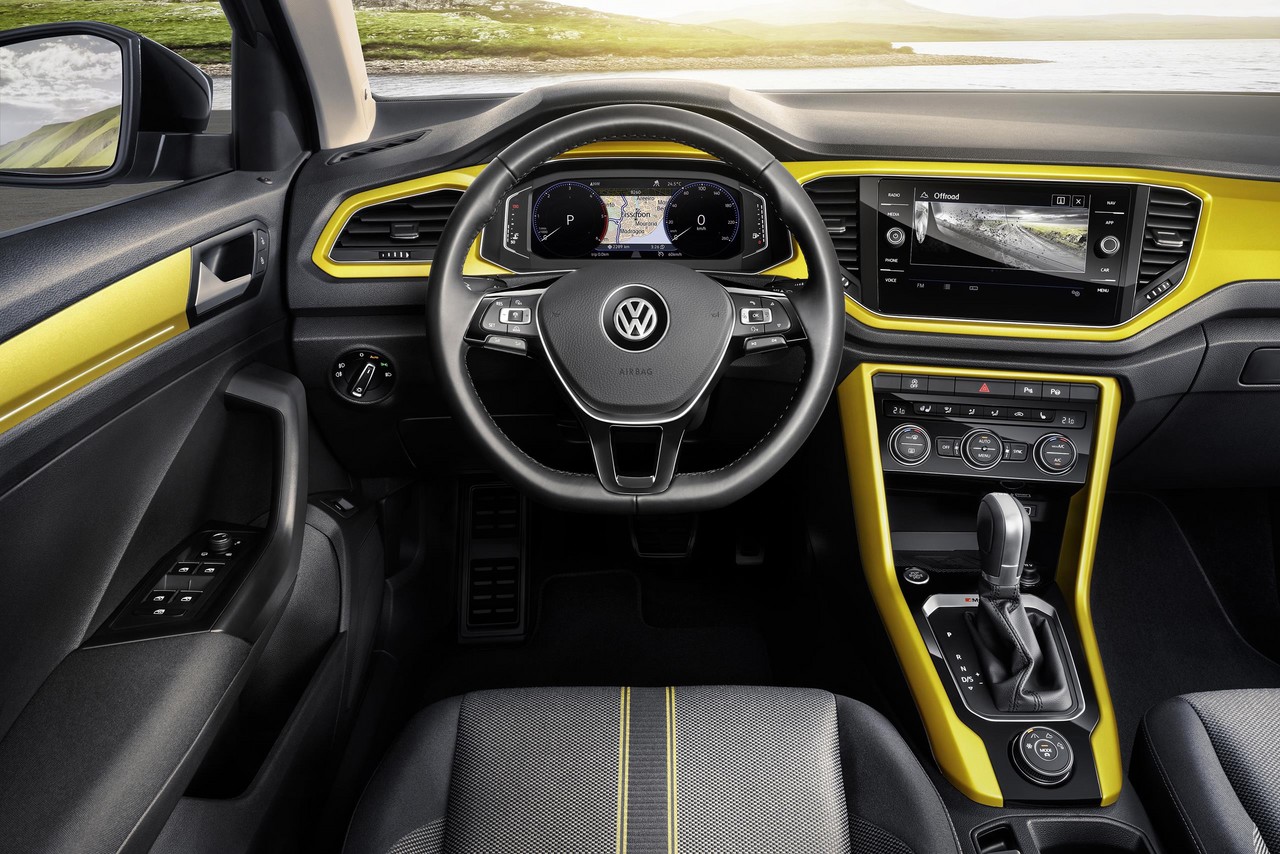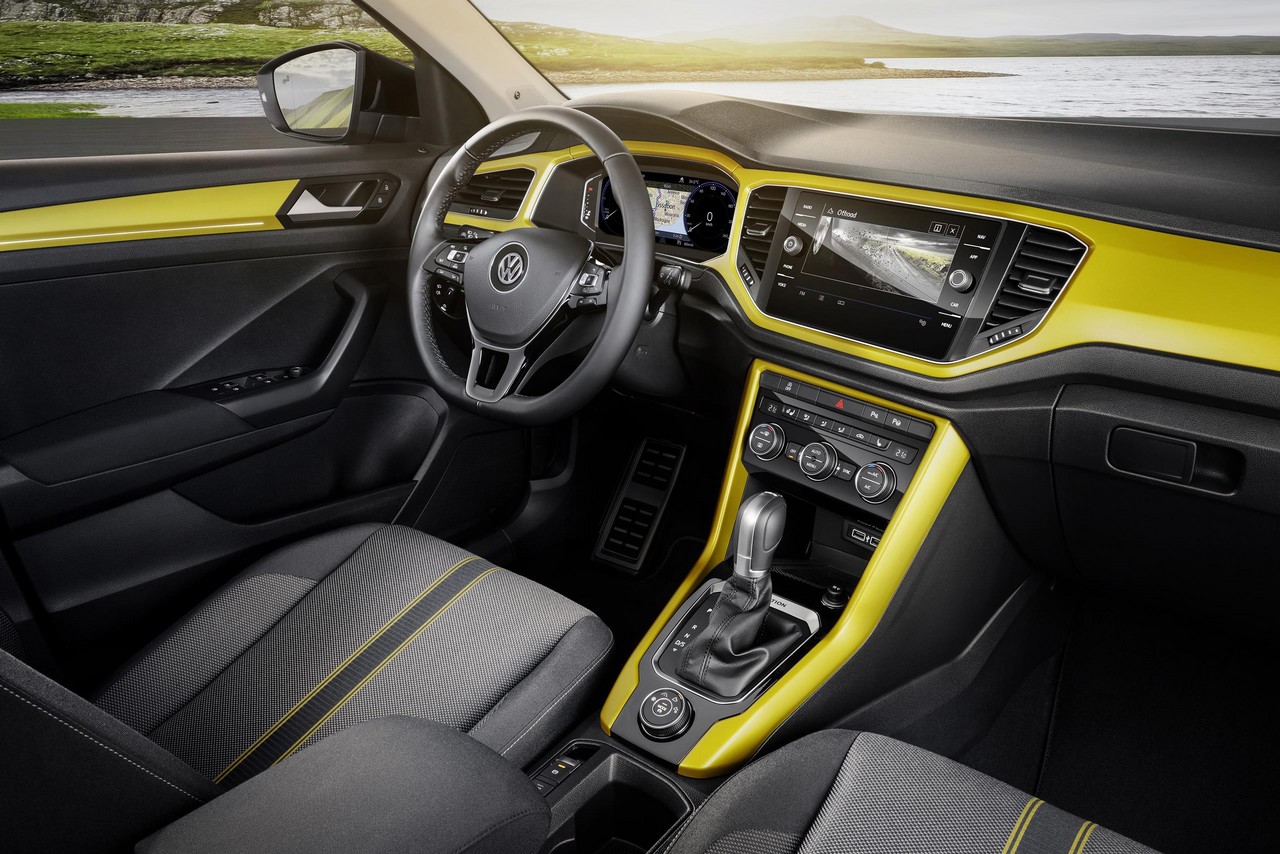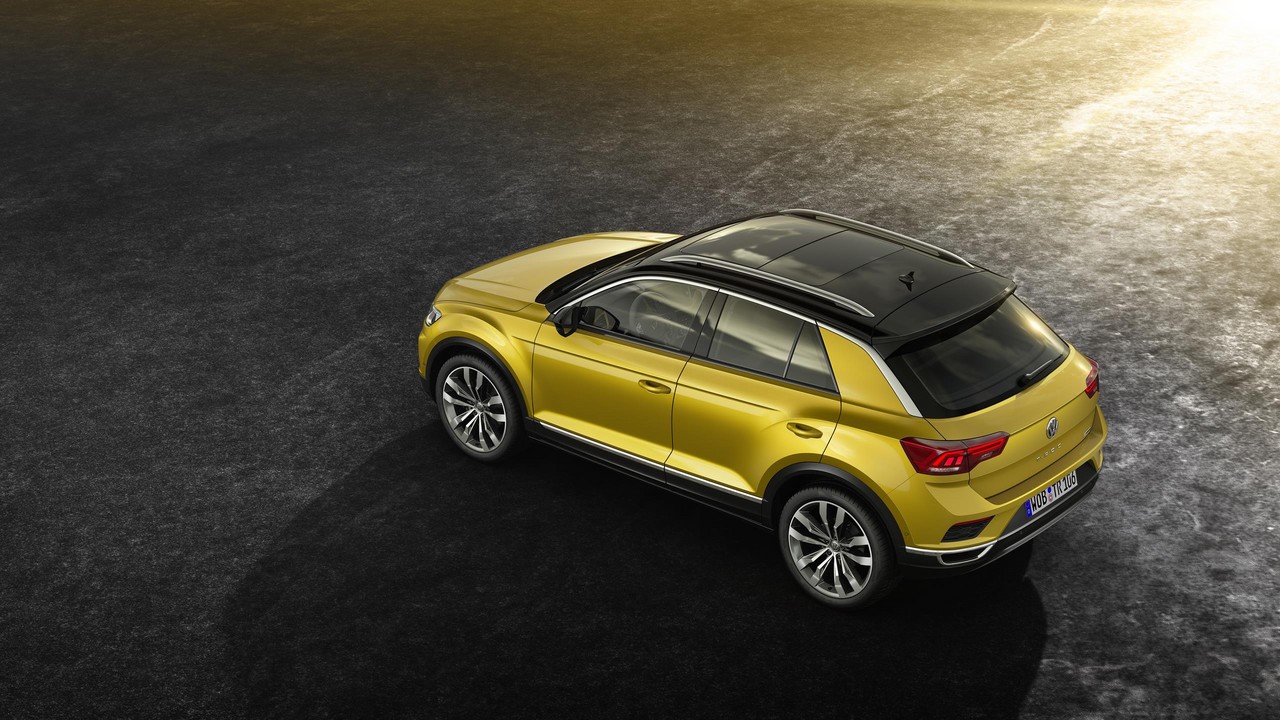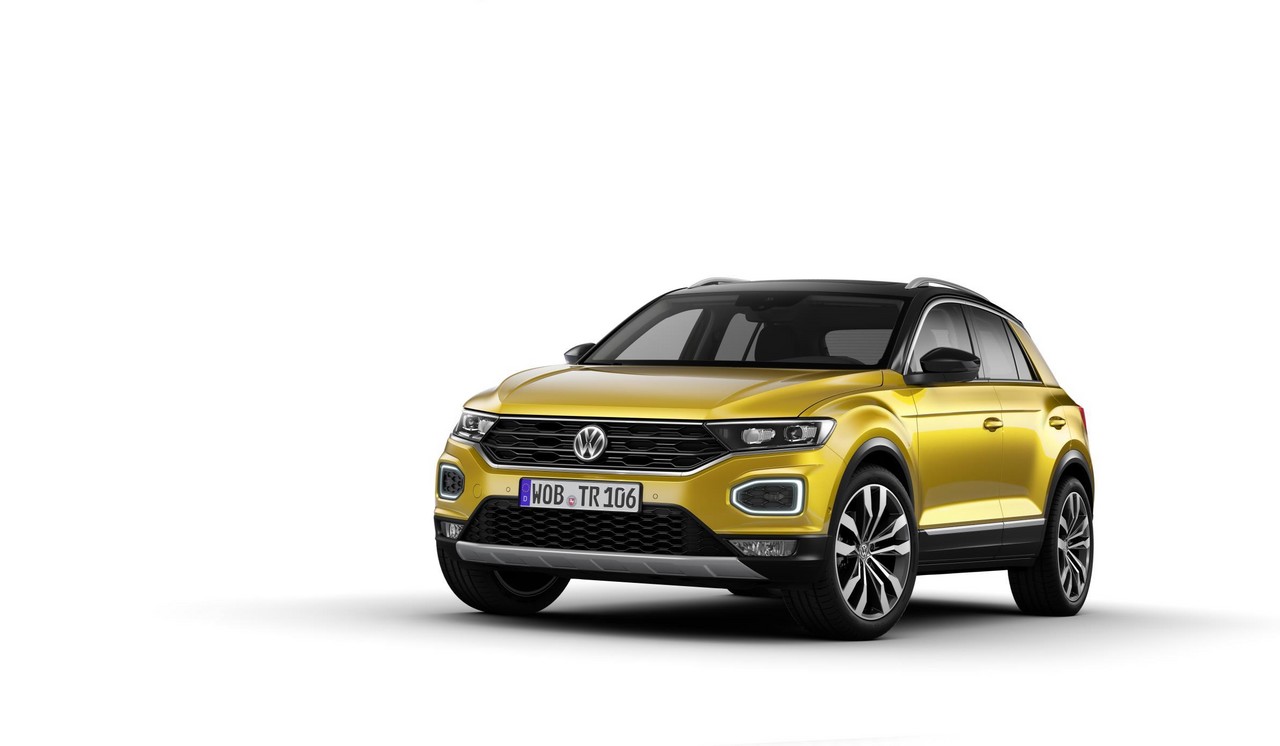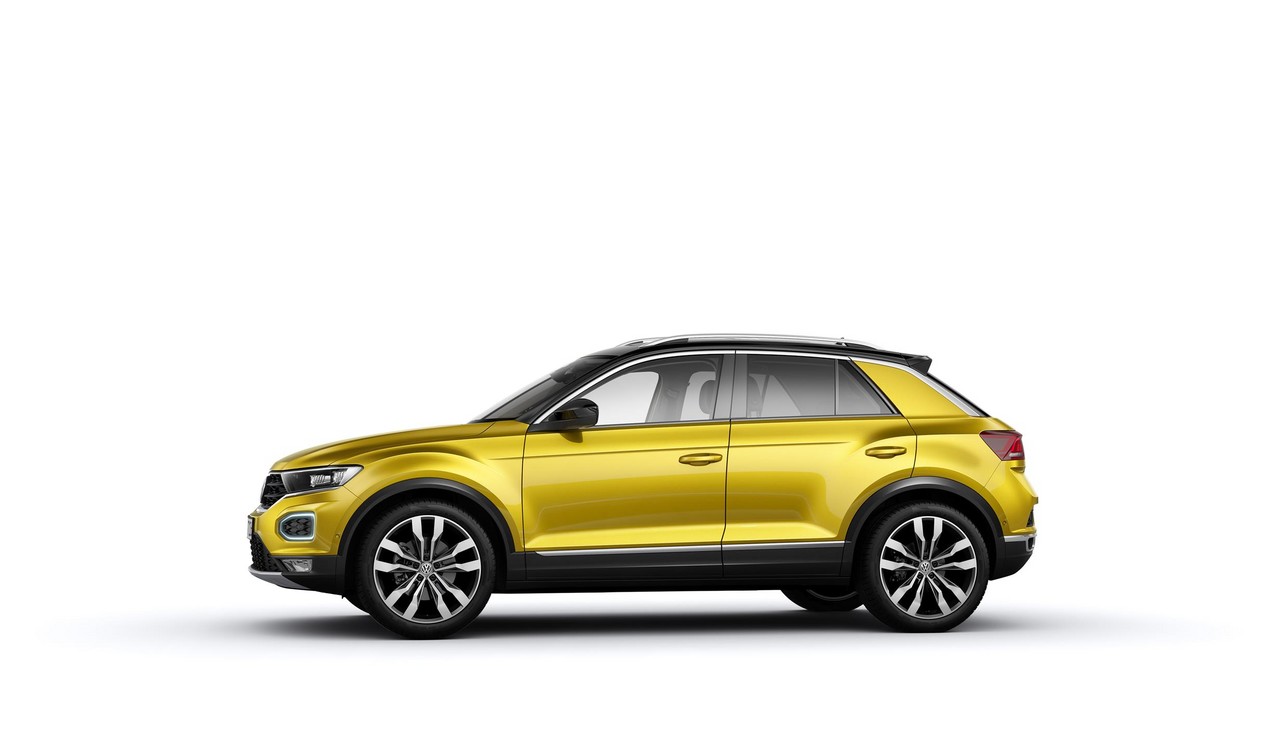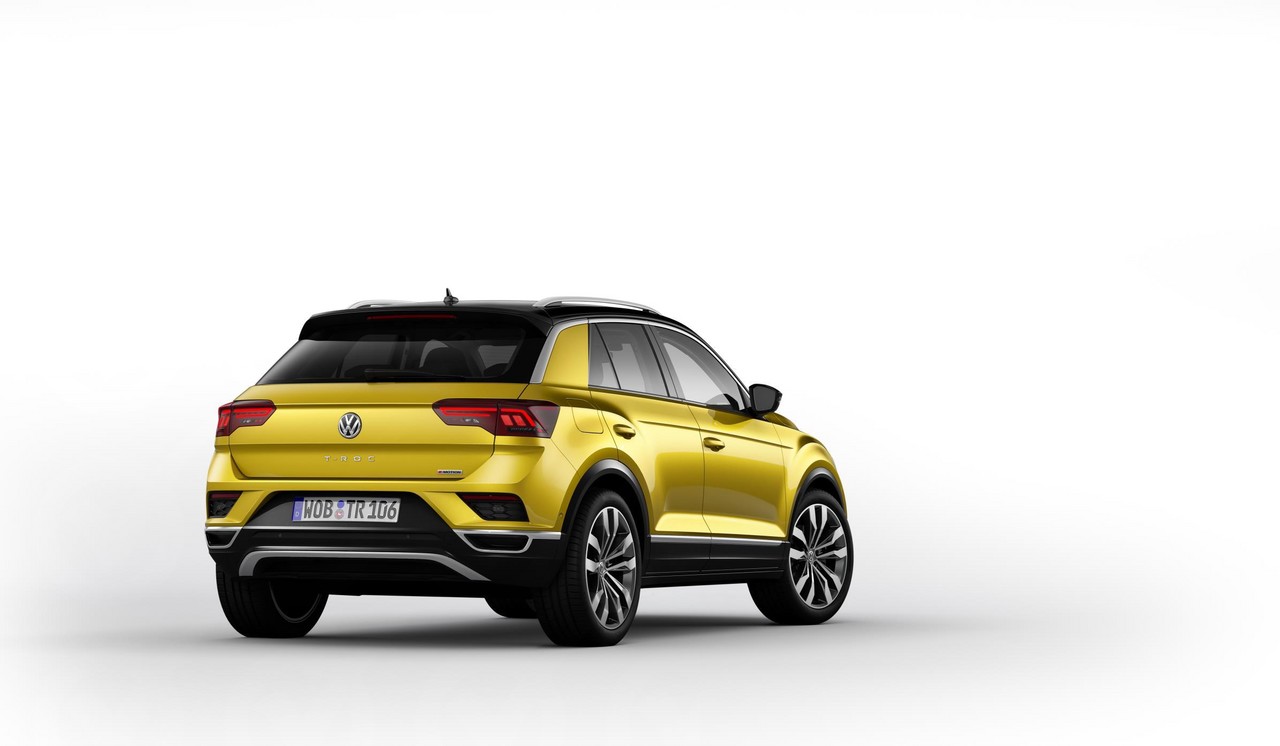
- Anticipated five star safety rating and AEB fitted as standard
- Based on Audi Q2 , predictable handling and good body control
- High standard of interior fit and finish
- Handling lacks agility of related Volkswagen Mk7.5 Golf
- Steering feedback?
- Turbo lag for 1.5 TSI ACT engine?
- Retail pricing?
Overview
Commencing production in September 2017, the Volkswagen T-Roc is a compact SUV. Available in front- and all-wheel drive powertrains, the Volkswagen T-Roc is produced with 1.0 TSI, 1.5 TSI, 2.0 TSI, 1.6 TDI and 2.0 TDI engines, though the Australian range is yet to be announced. To reduce fuel consumption, all engines for the Volkswagen T-Roc can shut down at speeds of 7 km/h or less, while the 1.5 TFSI ACT engine can also shut down two cylinders (#2 and #3) under low loads.
The Volkswagen T-Roc is expected to be released in Australia in the first quarter of 2018.
| Variant | Engine | Trans. | Peak power | Peak torque |
|---|---|---|---|---|
| 1.0 TSI | 1.0-litre CHZJ turbo petrol I3 | 6sp man., 7sp DSG |
85 kW at 5000-5500 rpm | 200 Nm at 2000-3500 rpm |
| 1.5 TSI ACT | 1.5-litre DADA turbo petrol I4 | 6sp man., 7sp DSG |
110 kW at 5000-6000 rpm | 250 Nm at 1500-3500 rpm |
| 1.5 TSI ACT 4MOTION | 1.5-litre DADA turbo petrol I4 | 7sp DSG | 110 kW at 5000-6000 rpm | 250 Nm at 1500-3500 rpm |
| 2.0 TSI 4MOTION | 2.0-litre CZPB turbo petrol I4 | 7sp DSG | 140 kW at 4200-6000 rpm | 320 Nm at 1450-4150 rpm |
| 1.6 TDI | 1.6-litre DDYA turbo diesel I4 | 6sp man., 7sp DSG |
85 kW at 3250-4000 rpm | 250 Nm at 1500-3200 rpm |
| 2.0 TDI, 2.0 TDI 4MOTION |
2.0-litre DFGA turbo diesel I4 | 7sp DSG | 110 kW at 3500-4000 rpm | 340 Nm at 1750-3000 rpm |
| 2.0 TDI 4MOTION | 2.0-litre DFHA turbo diesel I4 | 7sp DSG | 140 kW at 3500-4000 rpm | 400 Nm at 1900-3300 rpm |
Haldex V all-wheel drive system (‘4MOTION’)
The Volkswagen T-Roc is available with a fifth-generation Haldex all-wheel drive system which consists of an electronically controlled and hydraulically actuated multi-plate clutch that is located in front of the rear axle differential (at the end of the prop shaft).
Under low loads or when coasting, the rear axle can be decoupled to minimise fuel consumption such that the Volkswagen T-Roc is front-wheel drive only. If there is a loss of front-wheel traction, or such a loss was anticipated by on-board sensors, the clutch can engage to force the plates together and transfer torque to the rear axle ‘in just a few milliseconds’ for a 50:50 front:rear torque split.
Body and dimensions
The Volkswagen T-Roc is underpinned by Volkswagen’s MQB platform and shares its powertrains with the Audi Q2 . Although Volkswagen has not announced its dimensions, AustralianCar.Reviews understands that the T-Roc is around 4230 mm long, 1830 mm wide, 1500 mm tall and has a 2600 mm long wheelbase. The Volkswagen T-Roc has luggage space of 445 litres when the rear seats are in position, though this increases to 1290 litres when they are folded down and luggage is filled to the roofline.
Suspension and steering
The Volkswagen T-Roc has MacPherson strut front suspension, though the rear suspension depends on the drivetrain. While front-wheel drive models have semi-independent rear suspension (understood to be a rear torsion beam), models with the 4MOTION all-wheel drive system have four-link rear suspension.
The Volkswagen T-Roc has rack-and-pinion steering with electric power assistance.
Safety equipment
Standard safety equipment for the Volkswagen T-Roc includes dual front airbags, a driver’s knee airbag, front seat-mounted side airbags, full-length curtain airbags, ABS, electronic brake force distribution, brake assist, electronic stability control, traction control and front seatbelts with pre-tensioners and load limiters.
AustralianCar.Reviews expects locally delivered Volkswagen T-Roc vehicles to be fitted with the following active safety technologies as standard –
- Front Assist with Pedestrian Monitoring: uses a radar sensor located behind the VW badge in the radiator grille to detect if the T-Roc is closing too quickly on the vehicle ahead. If this occurs, Front Assist 1) provides audible and visual warnings to the driver; 2) brings the brake pads into contact with the brake discs and increases braking assistance to prepare for an emergency stop; and, 3) briefly applies the brakes (a ‘jolt’) to alert the driver. If the driver fails to respond, Front Assist applies the brakes automatically to avoid or reduce the severity a collision;
- City Emergency Brake: an extension of Front Assist, City Emergency Braking operates at speeds up to 30 km/h and uses a radar sensor and front camera to monitor the area ahead for vehicles and pedestrians. If a collision is anticipated, City Emergency Braking pre-charges the braking system, increases braking assistance and alerts the driver via visual and audible warnings. If the driver fails to respond, the system initiates autonomous emergency braking (AEB);
- Fatigue Detection: monitors driver behavior at speeds in excess of 65 km/h for signs of fatigue. If the driver exhibits signs of fatigue, a tone sounds and a warning appears in the multi-function display; and,
- Multi-collision brake: after a collision, multi-collision brake automatically applies the brakes for controlled deceleration to reduce vehicle speed and the likelihood of a second collision.
Driver Assistance Package
As an extra-cost option, AustralianCar.Reviews expects the Volkswagen T-Roc to be available with a Driver Assistance Package which may include the following technologies:
- Adaptive Cruise Control (ACC): using a radar sensor, ACC can apply the vehicle’s brakes to reduce vehicle speed and maintain a pre-set distance to vehicle ahead. ACC can also cause the vehicle to accelerate back to its cruising speed when the road ahead clears;
- Lane Assist (lane departure warning): using a camera to recognise lane markings, Lane Assist can detect unintentional lane drifting or changing and provide corrective steering actions for up to eight seconds. If the corrective steering actions are insufficient, the driver is alerted via steering wheel vibrations;
- Traffic Jam Assist: uses Adaptive Cruise Control (ACC) to provide automatic braking and accelerating in the stop-and-go speed range and the Lane Assist function to keep the T-Roc in the middle of its lane;
- Emergency Assist: if a lack of steering activity indicates that the driver is inactive or incapacitated, Emergency Assist operates to keep the vehicle within its lane, activates the hazard lights and initiates slow braking until the vehicle is stationary. To prevent an unintentional frontal collision with the traffic ahead, Adaptive Cruise Control (ACC) is also activated;
- Blind Spot Monitor: active at speeds above 15 km/h, the Blind Spot Monitor uses rear radar sensors to detect other vehicles up to 20 metres behind the T-Roc. If detected, an LED indicator in the door mirror illuminates to alert the driver to their presence. If the driver indicates to change lanes, the indicator flashes more brightly as a warning signal;
- Rear Traffic Alert: when the driver is reversing from a parking space, Rear Traffic Alert system uses radar sensors in the rear bumper to detect traffic up to 50 metres away that may cross the vehicle’s intended path. If approaching traffic is detected, the driver receives visual and audible warnings. If the driver does not respond to the warnings and there is an immediate collision risk, the brakes are applied automatically;
- Park Assist 3.0: can detect parallel and right angle parking spaces and provide automated steering for 1) parking manoeuvres while the driver controlled vehicle speed, and 2) when exiting a parallel parking space. In contrast to its predecessors, Park Assist 3.0 can provide automated steering for forward parking manoeuvres; and,
- Proactive occupant protection system: in a potential accident situation, the seatbelts would be tensioned and windows closed.
Features: Volkswagen T-Roc
For Australian-delivered vehicles, standard features for the Volkswagen T-Roc are expected to include Volkswagen’s ‘Composition’ media system with an eight-inch display, an eight speaker sound system, MP3/WMA/AAC-compatibility, 3.5 mm auxiliary and SD card inputs, Volkswagen’s ‘App-Connect’ USB input for smartphone integration (including Apple CarPlay, Android Auto and MirrorLink), Bluetooth mobile phone connectivity and audio streaming, air conditioning, cruise control with a programmable speed limiter, LED daytime running lights, a rear fog lamp, a rear view camera, steering wheel audio controls, a leather-wrapped steering wheel and gearshift knob, 40/60 split and folding rear seats, remote central locking, power windows and heated mirrors, a height and reach adjustable steering wheel, an electromechanical parking brake, tyre pressure monitoring, a 12 volt power outlet in the centre console, a trip computer and an immobiliser.
Further information will be available closer to launch.
